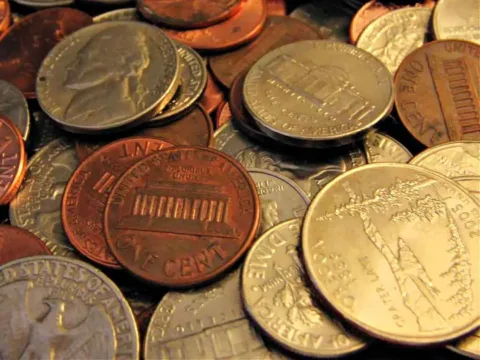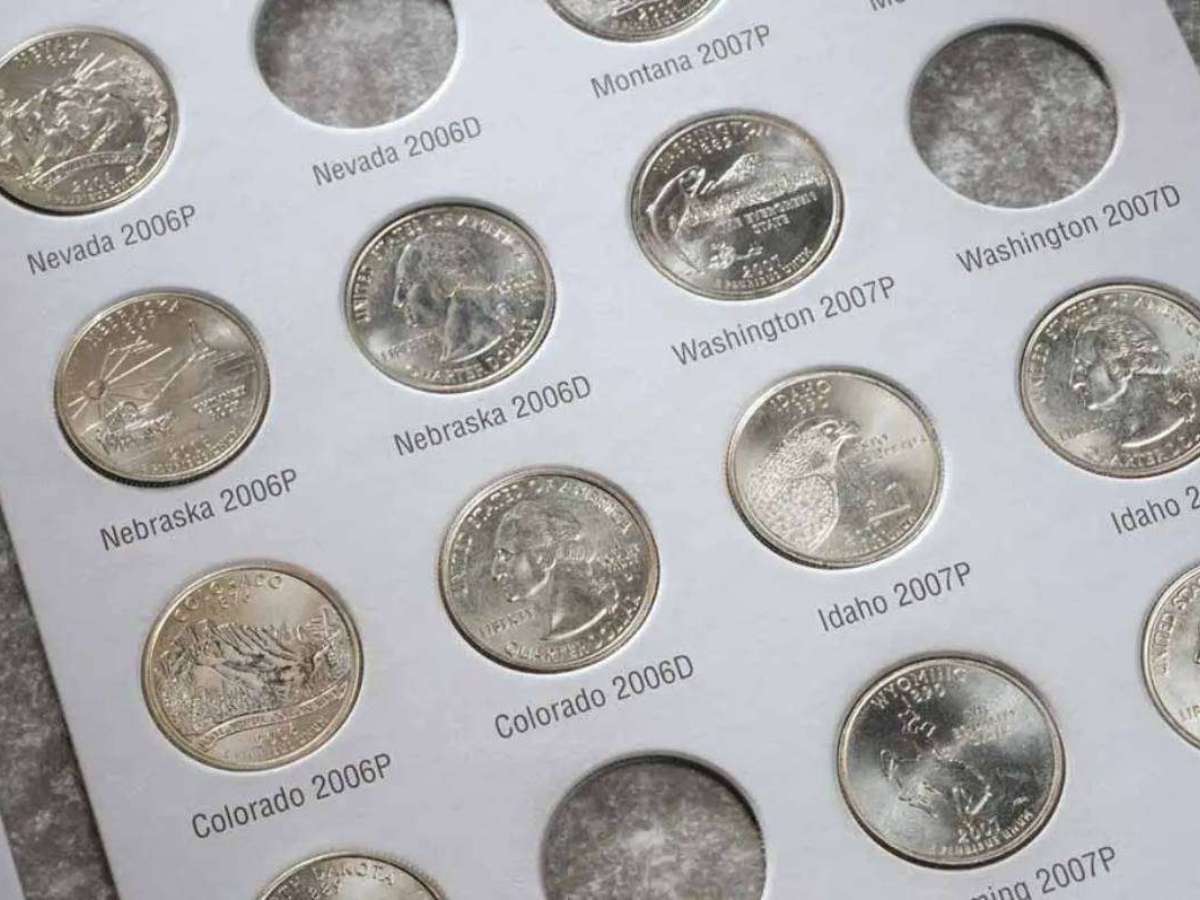
Some U.S. coins were once made from pure copper, nickel, silver, and gold.
But that’s not really the case anymore!
These days, many coins are made from alloys.
But why alloys? Why not just pure metal? And when did alloys become the norm in U.S. coins?
All great questions, and all about to be answered (along with several others)…
The History Of Alloys In U.S. Coins
A lot of people are under the impression that alloys in coins are a new thing — maybe so they’re cheaper to make or something.
Yet, alloys have been used in coins for centuries!
Certainly that’s been the case with the United States Mint, which didn’t really ever used pure metal to make coins (with some exceptions — such as the pure copper that was used for striking half cents and large cents). Most coins that the U.S. Mint has struck since day one in 1792 have been made from alloys:
- The earliest U.S. silver coins struck by the mint in the mid-1790s contained an 89.24% silver and 10.76% copper composition.
- The first gold coins of the same period had a 91.67% gold, 8.33% silver and copper profile.
Those silver and gold coins contain alloys. This contradicts what many people think about vintage United States coins — which are often believed to have been made from “pure silver” or “pure gold.” This thought is even perpetuated by TV and film, which showcases many references to old coins of pure silver or pure gold.
Take a line from the hit 2022 film A Man Called Otto, starring Tom Hanks as a Pittsburgh widower named Otto…
In one scene, Hanks’ 60-something character Otto talks about a 1964 Washington quarter he carries around that he says is “pure silver.” In reality, the U.S. Mint has never made pure silver quarters for circulation. Otto’s 1964 quarter was made from an alloy of 90% silver, 10% copper — just like most circulating U.S. silver coins made in the late 1830s through 1964.
Despite the 1964 silver quarter goof in A Man Called Otto, it’s still a wonderful movie — and the U.S. quarter serves as a significant plot device in some of the film.
How Are Alloys Different From Clad Coinage?
A lot of people confuse alloys and clad, which may seem similar but are different.
Let’s look at what an alloy is versus clad:
- Alloys are a blend of two or more metals — it’s a mixture of metals.
- Clad refers to the layering of one metal (or alloy) over a core that’s made from another metal (or alloy).
It’s important to remember that clad coins generally use alloys.
For example, standard United States copper-nickel clad coins like the dime and quarter are made with a copper-nickel alloy applied to a core of pure copper.
And the circulating Sacagawea golden dollar… Those aren’t made from gold at all! Rather, they’re clad coins made from an outer layer alloy of manganese-brass on a pure copper core.
Why Use Alloys In Coins?
There are many reasons the U.S. Mint and other government minting agencies use alloys in coins instead of pure metals.
These are the main advantages of why coins are made from alloys:
- It’s cheaper to use alloys.
Alloys incorporating base metals are cheaper to produce versus using a coin made from pure metals. This is especially true with metals that are getting expensive — like copper or silver. Rising metals prices is one key reason the U.S. Mint stopped striking circulating silver coinage in the 1960s and early 1970s and bronze pennies in the early 1980s. In a similar way, clad coins (which came into use in the United States in a big way in 1965) became far cheaper to make than the 90% silver coinage that had been struck for more than a century by the U.S. Mint.
- Alloys are generally stronger.
Gold is a soft metal. So other metals, like copper, are usually added to gold (or other metals) to make them more durable for use in coinage. Alloyed coins tend to not only last longer but also resist wear better than coins made from many of the pure metals used in coin compositions.
- Alloys can make coins easier to make.
Some pure metals, like nickel, are extremely hard — so hard that they could damage coin-minting equipment (like dies) after a short period of production. Adding another metal (such as copper in the case of nickel) can make it easier to create coins containing such metals. This is one reason why a copper-nickel alloy is used to make the U.S. five-cent coins popularly known as “nickels.” In fact, the coin dubbed the nickel is actually only 25% nickel — the rest of the alloy is copper.
- Alloys are less corrosive.
Copper is a highly reactive metal, meaning that exposure to air, water, even perspiration in the hands of those using the coins can make it oxidize. This is one reason older U.S. pennies (known as large cents, which were made from pure copper) tend to be found with varying degrees of porosity. The bronze alloy, which is composed of 95% copper and 5% zinc (or zinc and tin) makes such copper-based coinage less reactive to the elements and more durable overall.
- Alloys help make coins look the way they do.
Alloys aren’t just all about making coins cheaper, more durable, and more efficient to produce. They can also be used in artistic ways. Consider the 2018 Breast Cancer Awareness Commemorative $5 gold coin… It was made from an alloy of 85% gold, 14.8% copper, and the balance zinc. This alloy gives the coin a pinkish hue, the symbolic color used in supporting breast cancer survivors and their loved ones.
How Much Are Alloyed Coins Worth?
It all depends on which U.S. coin you’re asking about.
Coins made from silver- or gold-based alloys are generally worth more than coins made primarily from copper or nickel. Of course, this is not counting the coin’s numismatic value (the value of a coin based on its rarity or other collectible qualities).
Obviously, some copper or nickel coins are worth more than many silver or gold coins. Specifically, pieces like the 1909-S VDB Lincoln penny and 1937-D three-legged Buffalo nickel come to mind.
But, in general, when looking at the metal values of coins, you have to consider the current bullion prices. And the prices of silver, gold, nickel, and copper change almost all the time. You can check bullion values online.




